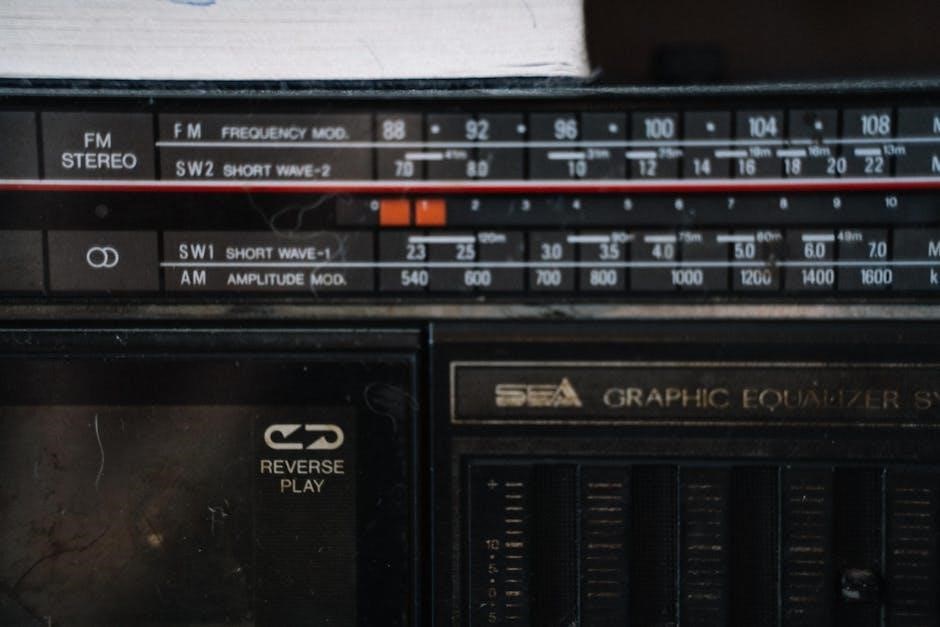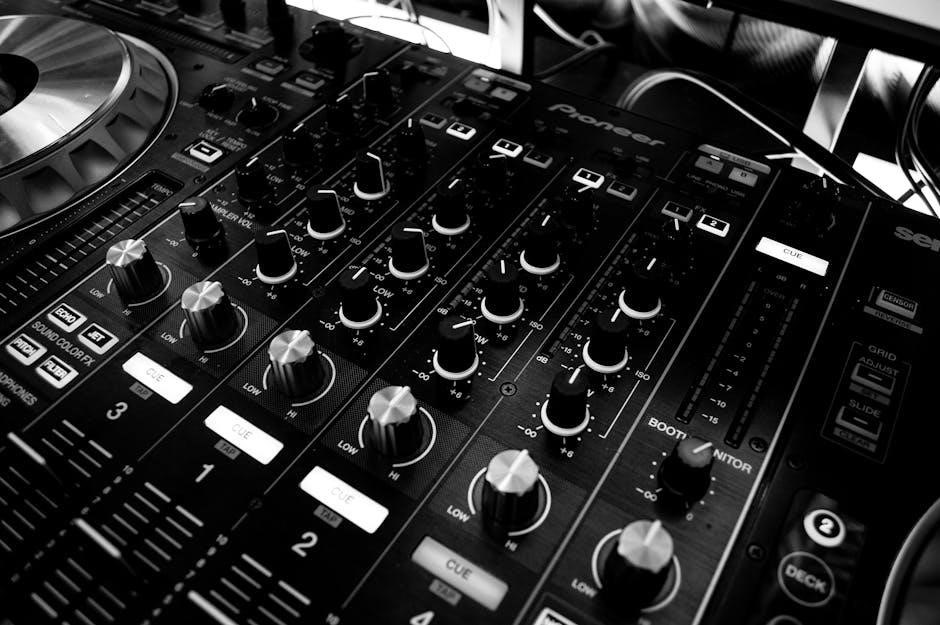Learning equalizer frequencies is crucial for music production and mastering with
proper techniques
and tools to achieve perfect sound quality always using thirty three words.
Understanding the Importance of EQ in Music Production
Equalization plays a vital role in music production, allowing engineers to manipulate frequencies and create a balanced sound. The process involves adjusting the levels of different frequency bands to achieve clarity and definition. By using EQ, producers can carve out space for each instrument and vocal, ensuring that every element sits well in the mix. This technique is essential for creating a professional-sounding track that translates well across various listening systems. With the right EQ techniques, music producers can enhance the impact of their tracks, preserve headroom, and achieve a sense of width and space. Understanding the importance of EQ is crucial for music production, and it requires a deep knowledge of the frequency spectrum and how to work with it to achieve the desired sound. Proper EQ techniques can make a significant difference in the quality of the final product.
EQ Frequency Spectrum
The frequency spectrum is divided into bands with specific frequencies using equalizer frequencies guide always.
Dividing the Audible Frequency Spectrum into Different Bands
The audible frequency spectrum is typically divided into several bands, including the sub, low-end, midrange, and high-end frequencies, with each band having its own unique characteristics and uses in music production.
The sub band, spanning from 20 to 60 Hz, is responsible for the low rumble and bass sounds, while the low-end band, ranging from 60 to 200 Hz, adds warmth and body to the sound.
The midrange band, which includes frequencies from 200 to 2000 Hz, is where the majority of the instrumental and vocal sounds lie, and is often considered the most important band in terms of overall sound quality.
The high-end band, encompassing frequencies from 2000 to 20000 Hz, adds clarity and definition to the sound, and is often used to enhance the brightness and presence of instruments and vocals.
By dividing the audible frequency spectrum into these different bands, music producers and engineers can tailor their sound to specific genres and styles, and create a unique and balanced sound that translates well across different listening systems.
This division of the frequency spectrum is a crucial aspect of the equalizer frequencies guide, and is used in a variety of audio applications, from music production and post-production to live sound and broadcasting.

Equalizer Settings for Common Instruments
Settings vary for instruments like guitars and pianos using specific equalizer frequencies guide techniques always.
EQ Guide for Drums, Including Kick and Other Percussion Instruments
The EQ guide for drums is essential in music production, as it helps to enhance the sound quality of kick and other percussion instruments. Using a parametric EQ, engineers can adjust the frequency spectrum to achieve the desired tone. For instance, the kick drum typically ranges from 40-60Hz, while the snare drum falls between 100-200Hz. By applying the right EQ settings, engineers can create a balanced sound that translates well across different listening systems. The goal is to find the perfect balance between the low-end rumble and the high-end attack, making the drums sound clear and punchy. With the right EQ techniques, drums can be made to sound more dynamic and engaging, adding depth and energy to the overall mix. This requires a good understanding of the EQ frequency spectrum and how to apply it to different drum elements.

Mastering and EQ
Mastering uses EQ to balance the frequency spectrum for optimal sound quality always using thirty three words in music production and audio engineering techniques and tools.
Using EQ to Balance the Frequency Spectrum During Mastering
During the mastering process, EQ plays a crucial role in balancing the frequency spectrum to ensure the track translates well across various listening systems. The goal is to achieve a balanced sound that preserves headroom, width, and impact. By using EQ, engineers can fine-tune the frequency balance to enhance the overall sound quality. This involves making subtle adjustments to the frequency spectrum to create a sense of space and clarity. The EQ frequency chart is a valuable tool in this process, providing a visual representation of the audio spectrum. By referencing this chart, engineers can identify areas of the frequency spectrum that require attention and make targeted adjustments to achieve a balanced sound. This process requires a deep understanding of the frequency spectrum and how different frequencies interact with each other.

EQing for Music Production
EQing is essential for music production using
various techniques
to achieve perfect sound quality always with great tools and online resources available today easily.
Navigating the EQ Frequency Chart for a Clean and Professional-Sounding Track
To navigate the EQ frequency chart, it’s essential to understand the different frequency ranges and how they affect the sound. The chart typically includes low-end, midrange, and high-end frequencies. By adjusting these frequencies, you can create a clean and professional-sounding track. The low-end frequencies, ranging from 20 Hz to 200 Hz, control the bass and low-end response. The midrange frequencies, ranging from 200 Hz to 2000 Hz, affect the body and tone of the sound. The high-end frequencies, ranging from 2000 Hz to 20,000 Hz, control the treble and high-end response. By using the EQ frequency chart, you can make informed decisions about how to adjust the frequencies to achieve the desired sound. This chart is a valuable tool for music producers and engineers, allowing them to create high-quality tracks with clarity and depth. Proper navigation of the EQ frequency chart requires practice and experience.

Equalizer Cheat Sheet
An equalizer cheat sheet is a valuable resource for music producers and engineers, providing a quick reference guide for equalization settings. The cheat sheet typically includes a list of common instruments and their corresponding frequency ranges. This allows producers to quickly identify the frequencies that need to be adjusted to achieve the desired sound. The cheat sheet can be used to enhance the sound of individual instruments or to balance the overall mix. By using an equalizer cheat sheet, producers can save time and improve the quality of their mixes. The cheat sheet can be customized to include specific settings for different genres or styles of music. Additionally, it can be used in conjunction with other audio processing tools to create a comprehensive mixing and mastering workflow. Overall, an equalizer cheat sheet is an essential tool for anyone working with audio.
